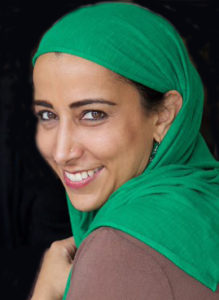teaching ethics
Select an item by clicking its checkbox
Some time back, I wrote a blog post called “Teaching Islam and gender: why we need to set an ethical agenda for the classroom.” It described how, working collaboratively, my class on Islam, gender, and sexuality drew on the work of Lila Abu-Lughod to articulate an ethical approach to our ...
I write in a time when the study of Islam is of paramount importance. This blog entry focuses on the teaching of Islam in interreligious settings, with an eye toward the notion of pluralism. So often, engaging this tradition starts with the assumption that the production of its knowledge was ...

Buddhist-Based Universities in the United States: Searching for a New Model in Higher Education
Date Reviewed: December 16, 2015
Expressing her concern about the current direction of higher education in the West, Dr. Storch argues that we can learn from the pedagogical principles of four “Buddhist-inspired” universities in the U.S. The first four chapters of this slim book each focus on one of these universities. Each is “a university that is state-accredited, which offers degrees in liberal arts and professional fields, and at the same time uses Buddhist pedagogical principles” (vii). Each chapter begins with a one to two page description of the school’s campus and the values its landscape and architecture embodies. This is followed by a brief biography of the male leader who founded the University or its parent Buddhist organization. These biographies, which occupy roughly a third of each chapter, are taken from official materials published by the organizations. The final two sections of each chapter review describe the historical founding of the school, its curriculum, and the impressions of its students. Data is drawn from websites and other promotional materials, and a few interviews. The last section of each chapter outlines the Buddhist pedagogical principles used at these universities, and the impact the author sees these having on students.
The fifth and final chapter is the most engaging part of the book. Here the author discusses Buddhist pedagogical principles in three categories. (1) “Mindfulness”: Even though traditional meditation practice is not required, or even taught, at all of these schools, an atmosphere of mindful engagement is cultivated, and this is beneficial for students and faculty. (2) “Interconnectedness of all life”: These schools emphasize this principle inside and outside the classroom. Students are treated as real people, not as consumers; there is plenty of green space and fresh air in the classrooms; and values of environmental protection and vegetarianism are promoted. (3) “Right motivation for giving and receiving education”: These schools resist the pervasive contemporary tendency toward the commodification of all things, especially education. Students are taught values instead, and faculty and administrators treat students with compassion. This book concludes with a reflection on two of the pedagogical themes of the book: the teaching of meditation and ethical education (meaning an education that is both ethical toward students, and that teaches students to be ethical themselves).
There are many places where the author could have deepened her inquiry. For example, how much do the educational models described here, which focus on educating the whole person and a commitment to values, represent a novel approach to education, and how much do they repeat already well-established models of liberal arts education? Also, although other Asian religions have not established comparable schools in the U.S., there is a long history of religiously-based liberal arts education, such as Jesuit Universities. How do these different approaches compare?
Ultimately, this book is short in length and narrow in scope. The first four chapters range between thirteen and eighteen pages, without notes. The most substantial chapter is the fifth, and it could easily have stood alone as a journal article. This chapter raises a few important points about Buddhist pedagogical principles, but the book as a whole seems only half finished, and at this price it is difficult to recommend it to the readers of this site.

